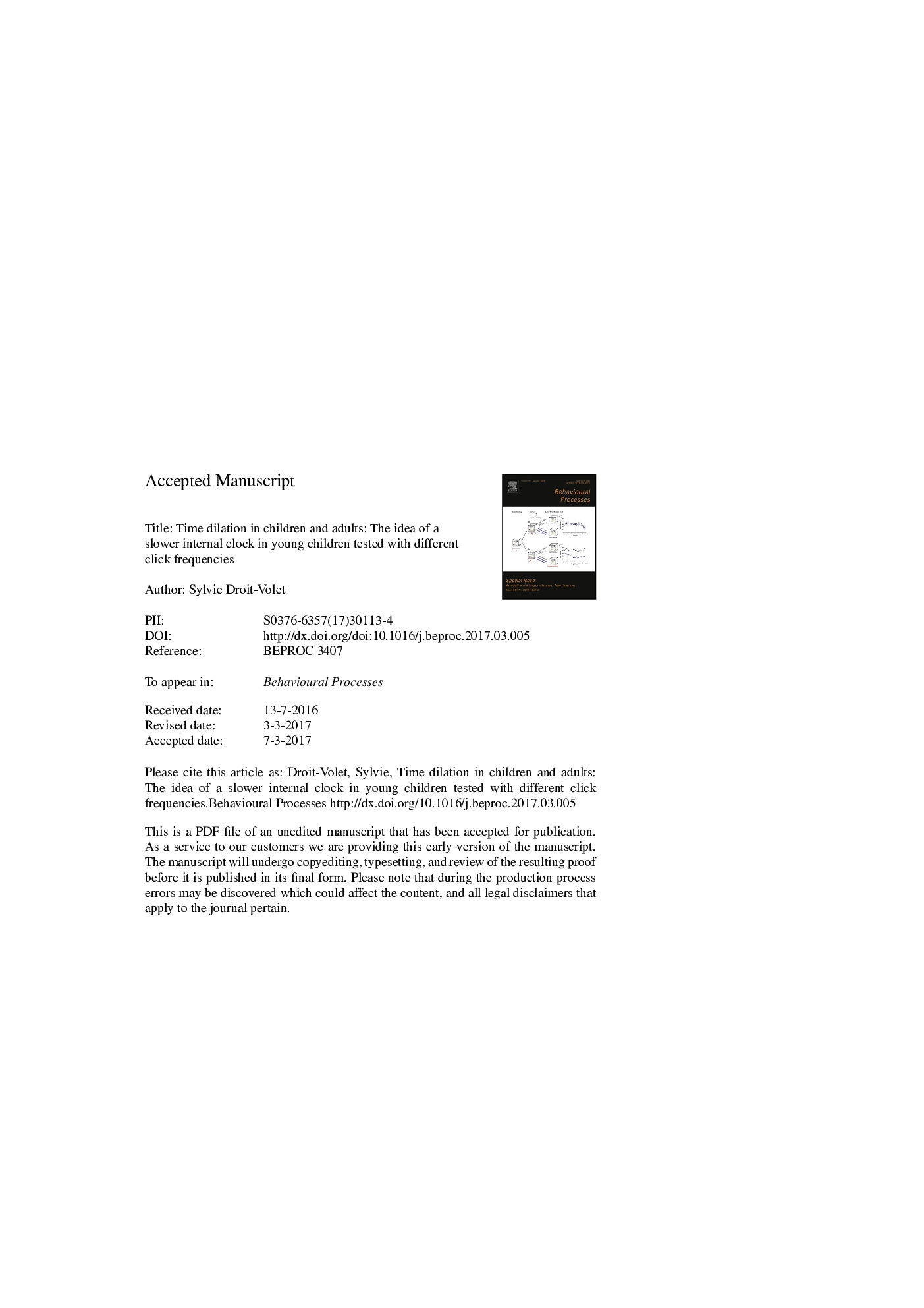| کد مقاله | کد نشریه | سال انتشار | مقاله انگلیسی | نسخه تمام متن |
|---|---|---|---|---|
| 5539661 | 1553142 | 2017 | 28 صفحه PDF | دانلود رایگان |
عنوان انگلیسی مقاله ISI
Time dilation in children and adults: The idea of a slower internal clock in young children tested with different click frequencies
ترجمه فارسی عنوان
انقباض زمان در کودکان و بزرگسالان: ایده یک ساعت داخلی کندتر در کودکان جوان با فرکانس های مختلف کلیک مورد آزمایش قرار گرفت
دانلود مقاله + سفارش ترجمه
دانلود مقاله ISI انگلیسی
رایگان برای ایرانیان
کلمات کلیدی
زمان سنجی، زمان، ساعت، کلیک ها، توسعه،
موضوعات مرتبط
علوم زیستی و بیوفناوری
علوم کشاورزی و بیولوژیک
علوم دامی و جانورشناسی
چکیده انگلیسی
This experiment examined the effect of a train of regular repetitive clicks of different frequencies (8Â Hz, 20Â Hz) on time judgment in a bisection task in children aged 5 and 8 years old and adults with two duration ranges (200/800 and 400/1600Â ms). Participants' scores on neurospychological tests assessing memory, information processing speed and different components of attention control were also measured. The results showed that a train of clicks produced a time dilation in the children as well as in the adults, with the result that the perceived duration was judged to last longer with than without clicks. However, the time dilation reached a maximum level at a lower click frequency value (8Â Hz) in the children than in the adults (20Â Hz). In addition, beyond this click value (8Â Hz), a reversal effect was observed in the youngest children, who responded “long” less often, while the time dilation was extended in the adults. In addition, while the differences in the time dilation between the click and the no-click condition were not correlated with the individual cognitive capacities, those that occurred when the click frequency increased from 8 to 20Â Hz were significantly correlated with individual capacities in terms of attention and working memory. The hypothesis of a slower internal clock in the younger children is discussed as are the attentional interference processes involved in the click effect on time judgment.
ناشر
Database: Elsevier - ScienceDirect (ساینس دایرکت)
Journal: Behavioural Processes - Volume 138, May 2017, Pages 152-159
Journal: Behavioural Processes - Volume 138, May 2017, Pages 152-159
نویسندگان
Sylvie Droit-Volet,
